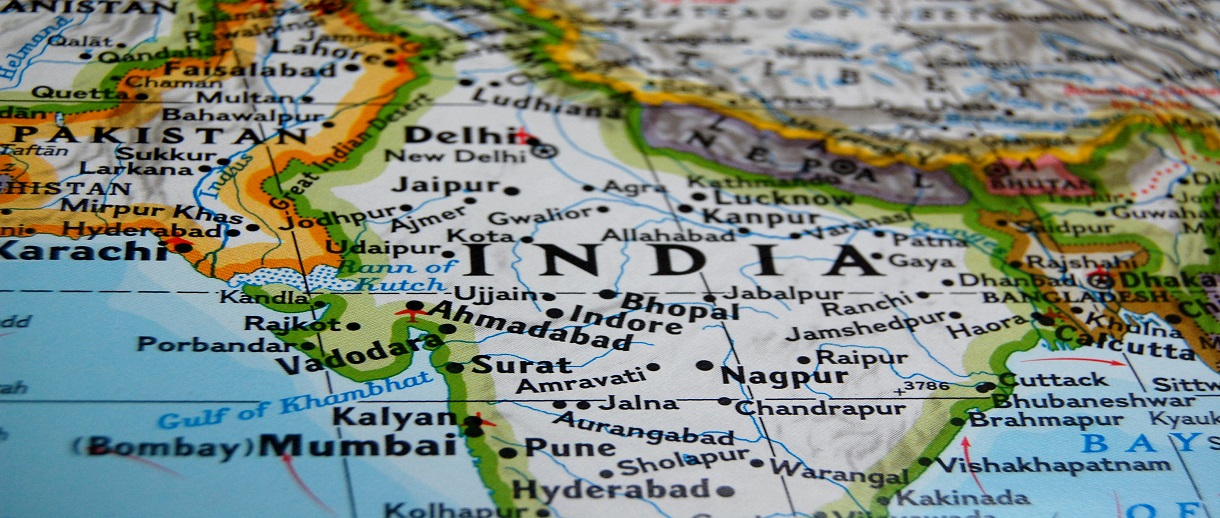
The Government of India has liberalized the regulatory framework governing geospatial data, including maps in India through guidelines released by the Department of Science and Technology (“DST”) on February 15, 2021. This radical decision is a welcome change for Indian companies and innovators as collection, dissemination, creation and publishing of geospatial data and maps within the Indian territory will become exponentially simpler. The Government acknowledges that the erstwhile regime imposed significant restrictions on the mapping industry due to a cumbersome system of licenses, approvals and permissions.i The deregulation will benefit startups, private sector companies and research organizations in realizing the potential of geospatial technology and employing this next generation technology in the country. Locally available and relevant geospatial data and maps will improve planning and management of resources. Democratizing access to maps will also have far-reaching implications for publishers in India.
These guidelines supersede anything to the contrary issued by government departments such as the DST, on the subject of acquiring and producing geospatial data and geospatial data services including maps, and would be the single point of reference for the same.ii Prior to the introduction of the guidelines, Indian publishers were required to comply with the Instructions for Publication of maps by Central/State Government Departments/Offices and Private Publishers (“Instructions”) as notified by Survey of India (“SOI”), the National Mapping Agency of the country. The following are the key developments brought in by the guidelines.
Self-certification
As per the Instructions, publishers were required to obtain prior permission of the Surveyor General of India for utilizing any SOI publication maps to prepare their own. In case the SOI maps were not used as base, the certification of external boundaries, island territories and coast lines of India by SOI was essential. Other security clearances for restricted and unrestricted category maps according to their scales were required from the Ministry of External Affairs, Defence and SOI.iii Additionally, licenses were necessary for publication of maps on the Web map Portal.iv
The guidelines have, barring some exceptions, eliminated the necessity of these approvals for publication as well as collection, generation, preparation, dissemination, storage, updating and/or digitization of geospatial data and maps within the territory of India. Now, self-certification will be used to convey adherence.v This is a major shift from the previous highly regulated procedure and has fundamentally removed most restrictions on publishing geospatial data and maps in India.
The guidelines specify that for political maps of India of any scale, the SOI published maps or boundary data is the standard that may be adhered to. However, what the process of self-certification of the data or maps entails is not clear as of now. Specific guidelines that outline the procedure to be followed by publishers for such maps still need to be introduced by the SOI.
No prohibited areas
The DST will notify a negative list of sensitive attributes that require regulation. These attributes have been defined as any data that when associated with positional data gives any additional meaning to it. Sensitive attributes should not be marked on any map and no person/legal identity should be able to identify any location with a prohibited attribute. The guidelines specify that the negative list will not include any prohibited areas.vi Which implies that areas would no longer be classified as restricted and unrestricted. Consequently, allowing the publication of maps of the entire Indian territory. As per the Instructions, the process of publishing maps for restricted and unrestricted zones involved clearances from the Ministry of Defence and hefty scrutiny charges. There may be a complete overhaul of these policies.
A timeline for release of the negative list along with the regulations by the Geospatial Data Promotion and Development Committee that is to be constituted by the DST, has not been designated yet. Although it is stated that there will be minimal restrictions, publishers may need to halt their activities till these regulations are stipulated.
Licenses to foreign companies
Publishers who are “Indian Entities” (including Indian citizens and Indian companies) under the guidelines, may license digital maps/geospatial data of spatial accuracy finer than the threshold value to foreign companies and foreign owned or controlled Indian companies only for the purpose of serving their customers in India. Provided that, there is a prohibition on re-use or resale of such data by licensees.vii Digital maps and geospatial data of accuracy finer than the threshold value will only be processed and stored in India whether on domestic cloud or physical servers.viii Indian publishers will now be able to access an untapped market for geospatial data and maps through issue of licenses.
No bar on export
The guidelines have removed restrictions on export of geospatial data and maps of spatial accuracy to the threshold limit except for the sensitive attributes in the negative list. Necessary amendments have to be made by the Department of Revenue and the Indian Government to implement this change.ix However, for geospatial data and maps of spatial accuracy value finer than the threshold, the guidelines clearly specify its storage and processing in India.x
The export of maps on a scale of one-fourth inch or more equal to a mile depicting any part of India, including its international boundaries and topographical features by contours, was restricted owing to the reason of maintenance of security in India.xi Nevertheless, this data is already globally available which makes the restriction unnecessary. Publishers will now be permitted to export geospatial data and maps of the specified threshold limit to other countries, resulting in an increase in the size of the market for them.
Easy accessibility of SOI published maps
Publishers were required to utilize outline maps of India published by SOI to prepare their own maps for complete accuracy. These had to be obtained from the Officer-In-Charge, Map Record and Issue Wing, SOI or other Map Sale Offices as per the list given in Annexure D of the Instructions, upon payment of nominal charges.xii Under the guidelines these SOI published maps have been made easily accessible by free download and their digital display and printing is now permissiblexiii, thereby simplifying the process of acquisition.
Pursuant to the guidelines, SOI and other government agencies that produce and own geospatial data and maps have to take immediate measures to simplify procedures and revise or abolish various forms/licenses that have been rendered redundant. Modern techniques such as cloud, open APIs and others have to be utilized to make its data available online in a useable format.xiv
Conclusion
The SOI Instructions will need to be amended or modified to reflect the changes introduced by the guidelines. Many clauses in the Instructions have been superseded by the guidelines and should be omitted to incorporate the new reforms in geospatial data and mapping. Furthermore, new regulations/instructions for publishers relating to the exact standard to be followed while publishing and the process of self-certification, need to be set down so there is no room for ambiguity.
i Press release, Ministry of Science & Technology (Release ID: 1698073)
ii Clause 8 of the Guidelines for acquiring and producing Geospatial Data and Geospatial Data Services including maps, Department of Science and Technology dated 15.02.2021
iii Preface of the Instructions for Publication of maps by Central/State Government Departments/Offices and Private Publishers, Survey of India, December 2016
iv Clause 33 of the Instructions for Publication of maps by Central/State Government Departments/Offices and Private Publishers, Survey of India, December 2016
v Clause 8(ii) of the Guidelines for acquiring and producing Geospatial Data and Geospatial Data Services including maps, Department of Science and Technology dated 15.02.2021
vi Clause 8(iii) of the Guidelines for acquiring and producing Geospatial Data and Geospatial Data Services including maps, Department of Science and Technology dated 15.02.2021
vii Clause 8(viii) of the Guidelines for acquiring and producing Geospatial Data and Geospatial Data Services including maps, Department of Science and Technology dated 15.02.2021
viii Clause 8(ix) of the Guidelines for acquiring and producing Geospatial Data and Geospatial Data Services including maps, Department of Science and Technology dated 15.02.2021
ix Clause 8(x) of the Guidelines for acquiring and producing Geospatial Data and Geospatial Data Services including maps, Department of Science and Technology dated 15.02.2021
x Clause 8(vii) of the Guidelines for acquiring and producing Geospatial Data and Geospatial Data Services including maps, Department of Science and Technology dated 15.02.2021
xi Notification No.227 Customs F.No.405/3/80-Cus.III dated 29.11.1980.
xii Clause 10 of the Instructions for Publication of maps by Central/State Government Departments/Offices and Private Publishers, Survey of India, December 2016
xiii Clause 8(xiii) of the Guidelines for acquiring and producing Geospatial Data and Geospatial Data Services including maps, Department of Science and Technology dated 15.02.2021
xiv Clause 8(xii) of the Guidelines for acquiring and producing Geospatial Data and Geospatial Data Services including maps, Department of Science and Technology dated 15.02.2021
Note: Seerat Bhutani, intern, assisted in writing this article.
















